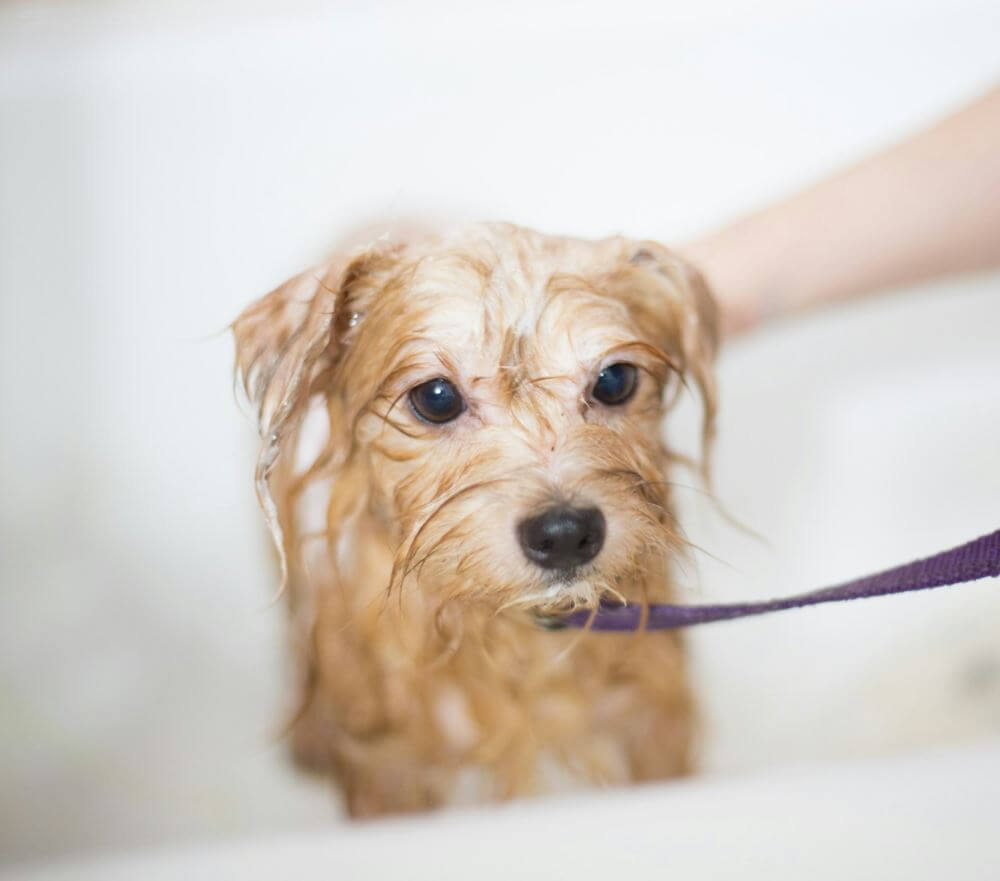Many dog owners have experienced the struggle of convincing their furry companions to take a bath, only to find them eagerly jumping into lakes or pools for a swim. But why do dogs exhibit this paradoxical behavior? In this article, we’ll explore the reasons behind dogs’ aversion to baths and their affinity for swimming, shedding light on factors such as control, water temperature, environment, and positive reinforcement.

Control and Choice:
When it comes to bath time, dogs often feel a lack of control as the event is usually initiated and controlled by their owners. This can lead to feelings of restriction and discomfort, especially if they’re not accustomed to it from a young age. Conversely, swimming offers dogs more freedom and autonomy. They can enter and exit the water at will, paddle around at their own pace, and revel in the sensation of buoyancy, making it a more enjoyable experience overall.
Water Temperature and Sensation:
Another factor that contributes to dogs’ differing reactions to baths and swimming is water temperature and sensation. Bath water temperature can be challenging to get right, potentially causing discomfort if too hot or cold. In contrast, natural bodies of water like lakes, rivers, and oceans are often cooler and offer a more stimulating sensory experience due to the natural movement of the water.
Familiar Scents and Environment:
The environment in which bathing takes place can also influence dogs’ preferences. Bathrooms often contain unfamiliar sounds and smells, such as running water and shampoo, which can be stressful for dogs. On the other hand, swimming in natural environments exposes dogs to new and intriguing scents, contributing to their enjoyment of the activity.
Positive Reinforcement:
Positive reinforcement plays a crucial role in shaping dogs’ attitudes towards baths and swimming. Bath time may not be associated with positive experiences for some dogs, leading to stress and reluctance. In contrast, swimming is often accompanied by play, treats, or praise, creating a positive association and making it a more enjoyable experience for dogs.
Tips for Making Bath Time Less Stressful:
If you’re struggling to convince your dog to embrace bath time, consider implementing the following tips:
- Start bathing your dog from a young age to familiarize them with the process.
- Use lukewarm water and gentle shampoo to ensure their comfort.
- Keep bath time short and positive.
- Rewarding calm behavior with praise or treats.
By understanding your dog’s preferences and creating a more positive bath time experience, you can help alleviate their aversion to baths. However, it’s essential to acknowledge that some dogs may never enjoy baths, and that’s okay. As long as they have access to alternative methods of staying clean and cool, they can still thrive as happy and healthy companions.
